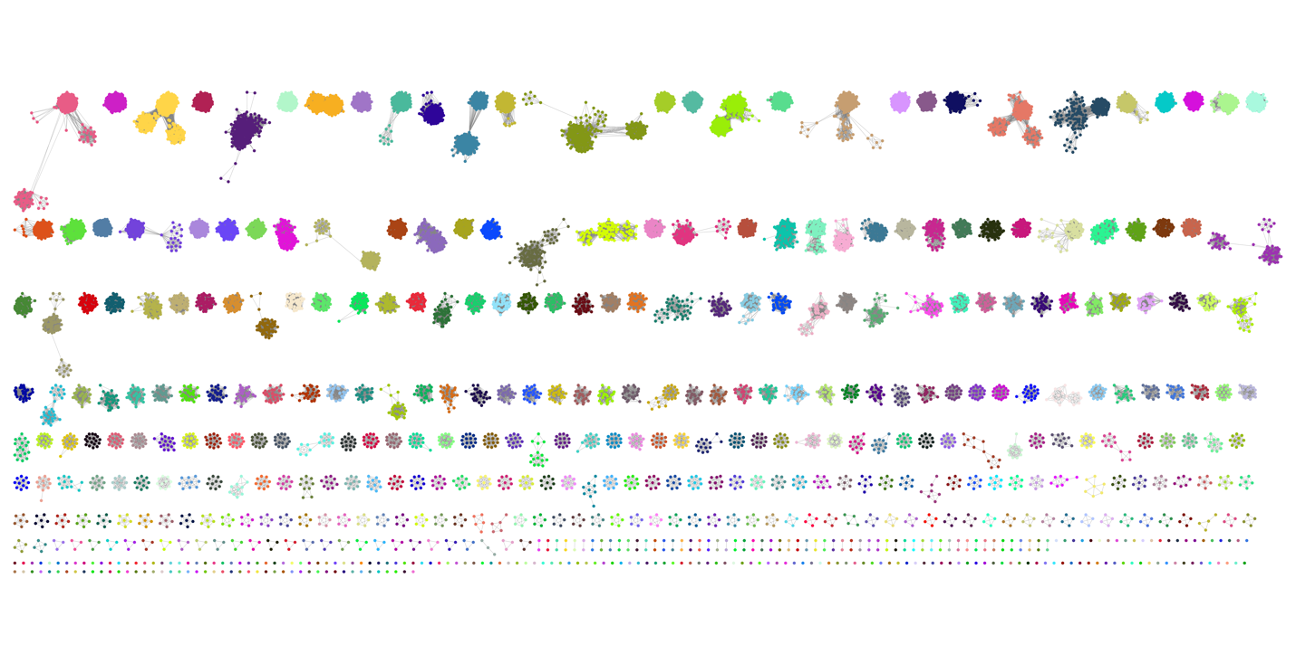32 Typing bacteria using PopPUNK
- Understand that there are newer whole genome based methods that are increasingly being used instead of MLST.
- Use PopPUNK to assign Global Pneumococcal Sequence Clusters (GPSCs) to Streptococcus pneumoniae genomes.
32.1 Newer methods for strain typing
Although Multilocus Sequence Typing (MLST) has been highly effective, newer methods leveraging whole-genome sequencing (WGS) are beginning to replace it due to their enhanced resolution and comprehensiveness. WGS provides a complete picture of the bacterial genome, allowing for the identification of single nucleotide polymorphisms (SNPs) across the entire genome rather than just a limited set of housekeeping genes. This approach offers a finer scale of differentiation between strains, which is crucial for detailed epidemiological investigations and understanding transmission dynamics. Additionally, WGS facilitates the detection of horizontal gene transfer, virulence factors, and antibiotic resistance genes, providing a more holistic view of bacterial pathogenicity and evolution. Tools and platforms such as core genome MLST (cgMLST) and SNP-based phylogenetic analysis have been developed to utilize WGS data, offering higher resolution and more accurate strain typing. As sequencing technologies become faster and more cost-effective, WGS is increasingly becoming the gold standard for bacterial strain typing, enabling precise and comprehensive bacterial surveillance and research.
32.2 PopPUNK
PopPUNK (Population Partitioning Using Nucleotide K-mers) is a bioinformatics tool designed for the rapid and scalable analysis of bacterial population structure using whole-genome sequencing data. It works by comparing genomes based on k-mer frequencies, where k-mers are short, fixed-length sequences of nucleotides. PopPUNK creates a distance matrix by calculating the genetic distances between all pairs of genomes, capturing both core and accessory genome variations. This matrix is then used to cluster genomes into distinct populations or clades using a combination of hierarchical and density-based clustering algorithms. PopPUNK can handle large datasets efficiently, providing insights into the evolutionary relationships, population dynamics, and epidemiological patterns of bacterial species. Its ability to integrate core and accessory genome data makes it a powerful tool for understanding microbial diversity and for tracking the spread of bacterial strains in public health contexts.
32.2.1 Global Pneumococcal Sequence Clusters (GPSCs)
PopPUNK has been instrumental in assigning Global Pneumococcal Sequence Clusters (GPSCs), thereby enhancing our understanding of the worldwide population structure of Streptococcus pneumoniae. By analyzing extensive collections of whole-genome sequences from pneumococcal isolates collected globally, PopPUNK clusters these genomes into distinct lineages based on k-mer frequency comparisons. This high-resolution clustering allows for the identification of major lineages and sub-lineages, providing insights into the genetic diversity and evolutionary relationships among pneumococcal strains across different geographic regions. The tool has been used to trace the spread of specific lineages, monitor the impact of pneumococcal conjugate vaccines (PCVs) on the population structure, and identify emerging strains that may pose new public health threats. By integrating global genomic data, PopPUNK facilitates a comprehensive and detailed understanding of pneumococcal epidemiology, which is crucial for devising effective vaccination strategies and managing antibiotic resistance on a global scale.

32.3 Running PopPUNK
Creating assembly sheet
First we need to create a tab-delimited file (called assemblies.txt) containing the samples we want to assign GPSCs to and where the assemblies are located:
This file can be created in a standard spreadsheet software such as Excel, as long as you save the file in tab-delimited format.
Running PopPUNK
Before running the poppunk command, we start by activating the respective software environment:
mamba activate poppunkTo run PopPUNK on our assemblies, the following commands can be used:
# create output directory
mkdir -p results/poppunk
# run PopPUNK
poppunk_assign --db GPS_v8_ref --external-clustering GPS_v8_external_clusters.csv --query assemblies.txt --output results/poppunk --threads 8The options we used are:
--db- GPSC reference database.--external-clustering- GPSC designations.--query- a 2-column tab-delimited file containing sample names and their assembly paths.--output- the output directory for the results.--threads 8- specifies how many CPUs to use.
32.4 Summary
- There are whole genome based alternatives to MLST such as cgMLST and PopPUNK
- PopPUNK can be used to assign existing GPSCs to new genomes.
References
Gladstone RA, Lo SW, Lees JA, Croucher NJ, van Tonder AJ, Corander J, Page AJ, Marttinen P, Bentley LJ, Ochoa TJ, Ho PL, du Plessis M, Cornick JE, Kwambana-Adams B, Benisty R, Nzenze SA, Madhi SA, Hawkins PA, Everett DB, Antonio M, Dagan R, Klugman KP, von Gottberg A, McGee L, Breiman RF, Bentley SD; Global Pneumococcal Sequencing Consortium. International genomic definition of pneumococcal lineages, to contextualise disease, antibiotic resistance and vaccine impact. EBioMedicine 2019. DOI